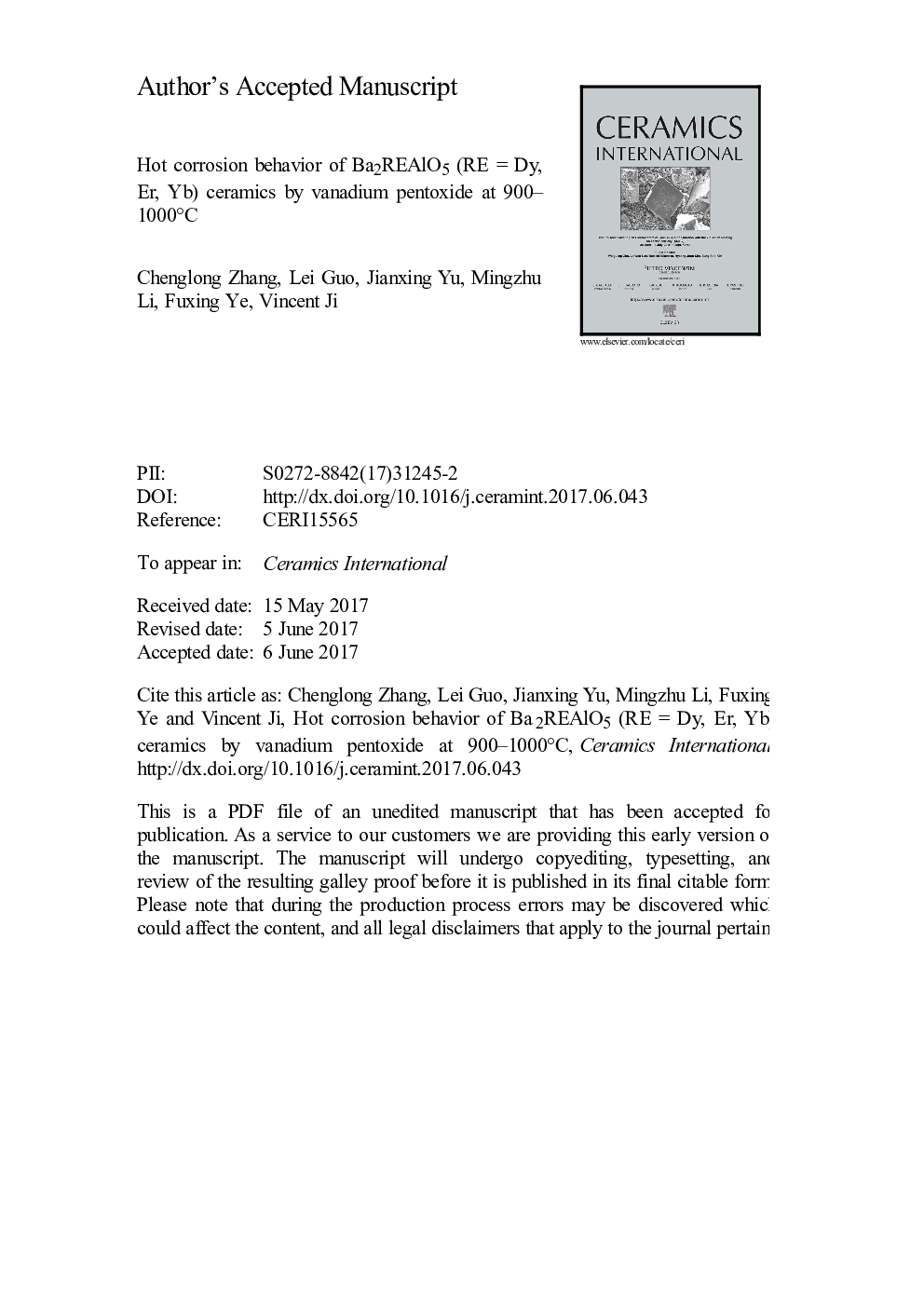| Article ID | Journal | Published Year | Pages | File Type |
|---|---|---|---|---|
| 5437484 | Ceramics International | 2017 | 36 Pages |
Abstract
Hot corrosion behavior of Ba2REAlO5 (RE = Dy, Er, Yb) ceramics exposed to V2O5 molten salt at 900 °C and 1000 °C was investigated, providing a better understanding of their corrosion resistance as promising thermal barrier coatings. Obvious surface reactions occurred forming continuous, dense reaction layers on the top surfaces of the samples, the types of corrosion products being temperature and time independent. After heat treatment for 4 h and 20 h in V2O5 salt at the two temperatures, the corrosion products consisted of REVO4, Ba2REV3O11 and BaAl2O4 (RE = Dy, Er, Yb). Prolonged heat treatment and elevated temperature promoted the growth of Ba2REV3O11 and REVO4 grains. The reaction layer had a positive function on suppressing further penetration of the molten salt. The mechanism by which the corrosion reaction occurs is proposed based on Lewis acid-base rule, phase diagrams and thermodynamics.
Related Topics
Physical Sciences and Engineering
Materials Science
Ceramics and Composites
Authors
Chenglong Zhang, Lei Guo, Jianxing Yu, Mingzhu Li, Fuxing Ye, Vincent Ji,
